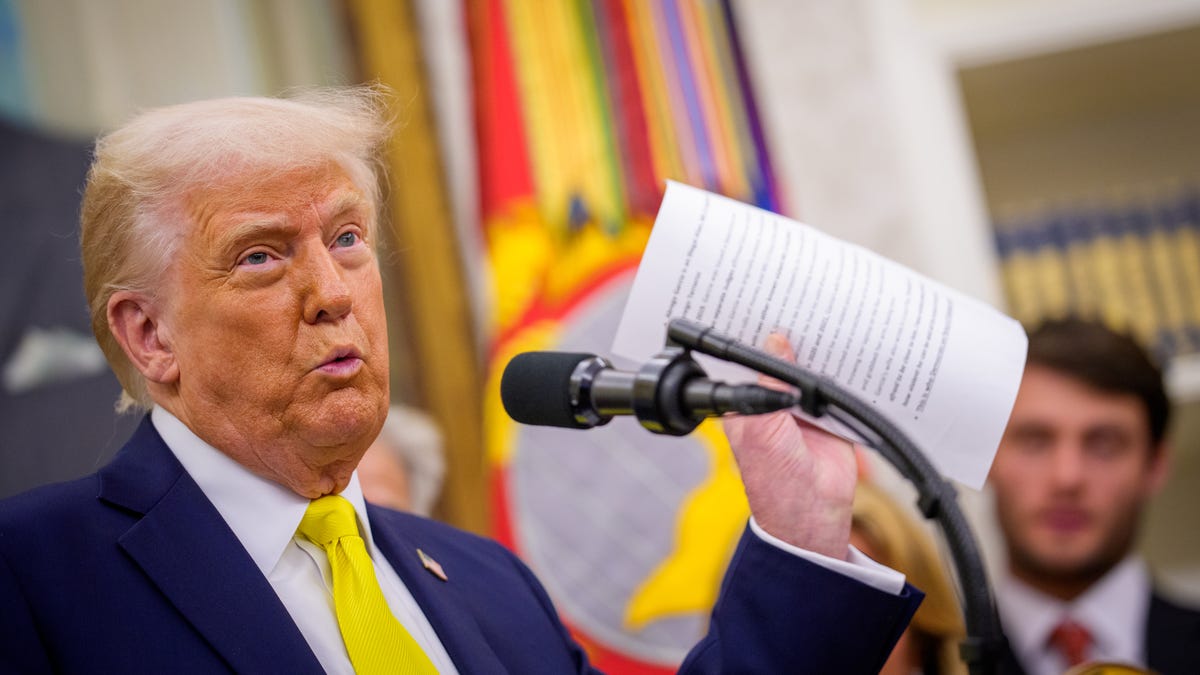
Disabled protesters removed from House committee hearing
Disabled demonstrators protesting a Republican proposal to cut benefits were forced to leave a House committee hearing and arrested.
The Senate narrowly approved President Donald Trump’s massive legislation package on Tuesday, July 1, which includes the largest cuts to Medicaid in history.
The so-called “One, Big Beautiful Bill,” spanning over 900 pages, cuts funding to several public safety net programs, which in part help pay for a continuation of 2017 tax cuts, along with other funding priorities for the administration, like increased immigration enforcement and and large investments in the military and border security.
The largest cut is to Medicaid, pulling roughly $1 trillion from the joint federal and state program over the next decade, according to June 28 estimates from the nonpartisan Congressional Budget Office. The Senate’s version of the bill could leave 11.8 million Americans uninsured by 2034, the report said.
The vote came after nearly four days of wrangling among Senate Republicans, with the expansive cuts to Medicaid, along with decreases in funding to Medicare, a leading source of contention among lawmakers. It’s due to remain a sticking point as it heads back to the House, with some representatives already voicing concerns over the Medicaid cuts.
As the bill’s potential cuts to the two programs continue to dominate debates, here’s what to know about the difference between Medicare and Medicaid.
What is Medicare?
Medicare is federal health insurance for people 65 or older, but also extends to some people under 65 with certain disabilities or conditions.
It was established alongside Medicaid on July 30, 1965 by President Lyndon B. Johnson, and has expanded eligibility over the decades. There are more than 68 million Americans enrolled in the the program, according to the latest federal data collected in March, and over 90% of those covered are 65 or older.
Original Medicare includes two parts, Part A and Part B, which pertains to hospital insurance and medical insurance, respectively. The insurance covers most, but not all, costs for approved health care services and supplies, according to the U.S. Centers for Medicare and Medicaid Services, which runs the two programs. Most people are required to pay premiums, deductibles and copays while enrolled in Medicare.
After individuals in the Medicare program meet their deductibles, they then pay the remaining costs for care and services, if applicable. There’s no limit on out-of-pocket costs per year, so supplement plans, also known as “medigap plans,” are often used to bridge the coverage. More than 51% of Americans on Medicare have some sort of supplement such as Medicare Advantage, and over 81% are enrolled in the Medicare Part D plan to help offset prescription drug costs, federal data shows.
What is Medicaid?
While Medicare is a federal program that mainly serves seniors and people with disabilities, Medicaid is a state-administered program for members of other groups in need of health care and insurance assistance, and gets its funding from both federal and state governments. Those covered include low-income families, people who are pregnant and those with disabilities, and Americans needing long-term care.
States tailor their Medicaid programs, according to the U.S. Centers for Medicare and Medicaid Services, so there’s a wide variation in what is offered, depending on where individuals live, and each state has their own eligibility criteria. Medicaid offers benefits that Medicare doesn’t normally cover, the Department of Health and Human Services says, such as nursing home care and personal care services. Those with Medicaid usually don’t pay anything for covered medical expenses, according to the department, but may owe a small co-payment for some items or services.
Contributing: Sarah Wire, USA TODAY.
Kathryn Palmer is a national trending news reporter for USA TODAY. You can reach her at kapalmer@usatoday.com and on X @KathrynPlmr.








